| 1 | A. Body length (not including appendages) less than 3 mm | 2 |
| – | B. Body length more than 3 mm | 7 |
| 2(1) | A. Metasoma with sclerotized carapace formed by terga 1–3; Chile | Gondwanocentrus |
| – | B. Metasoma with sclerotized carapace formed by terga 1–4. Widespread | 3 |
| – | C. Metasoma lacking sclerotized carapace; five or more sclerotized terga visible in dorsal view; CC. rarely 4th and 5th terga desclerotized but fully exposed; Neotropical | 5 |
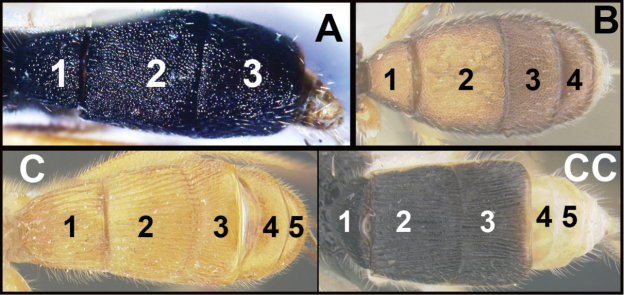
| ||
| 3(2) | A. r-m crossvein of forewing present (though often weak), closing second submarginal cell | Stiropius |
| – | B. r-m crossvein of forewing absent, second submarginal cell of forewing not closed apically | 4 |

| ||
| 4(3) | A. Malar space (distance between base of mandible and eye) relatively short and malar suture present between eye and mandible; Neotropical | Choreborogas |
| – | B. Malar space relatively long and malar suture absent; Nearctic | Polystenidea |
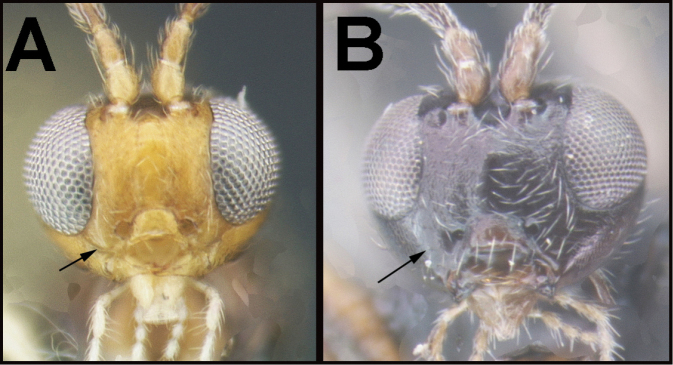
| ||
| 5(2) | A. Second submarginal cell of forewing present; apical abscissa of forewing vein M relatively straight | 6 |
| – | B. Second submarginal cell of forewing absent; apical abscissa of forewing vein M sinuate; Neotropical and recently discovered in Papua New Guinea (Braet 2016) | Jannya |

| ||
| 6(5) | A. Antenna not emanating from a protruding shelf; eyes emarginate; head wider than long | Bulborogas |
| – | B. Antenna emanating from a protruding shelf; eyes not emarginate; head at least as long as wide | Conobregma |
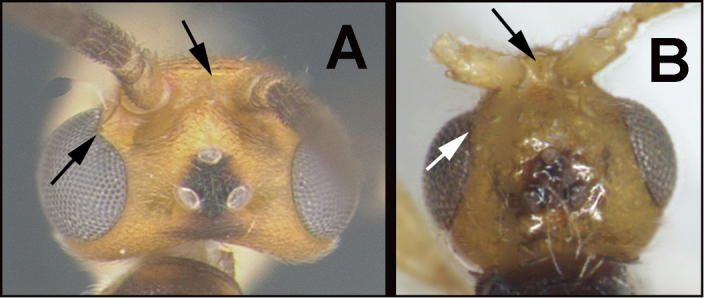
| ||
| 7(1) | A. Tarsomeres 2‒4 of front and middle legs reduced and compact; tarsomeres 2‒4 each as short as or shorter than wide, 5th tarsomere as long as or longer than tarsomeres 2‒4 combined | 8 |
| – | B. Tarsomeres 2‒4 of front and middle legs not reduced and compact; tarsomeres 2‒4 each longer than wide, 5th tarsomere shorter than tarsomeres 2‒4 combined | 9 |

| ||
| 8(7) | A. Hind wing vein R much longer than high and RS weakly curved or absent; widespread. | Yelicones |
| – | B. Hind wing vein R much higher than long and RS strongly curved; Neotropical | Pseudoyelicones |

| ||
| 9(7) | A. Membrane of forewing first submarginal evenly setose; widespread | 10 |
| – | B. Membrane of forewing first submarginal with a distinct windowlike patch devoid of setae; Neotropical | Cystomastax |

| ||
| 10(9) | A. m-cu crossvein of hind wing long and conspicuous and directed towards base of wing; ovipositor as long as middle tibia or longer | Clinocentrus |
| – | B. m-cu crossvein of hind wing absent or if present then shorter and not directed towards the base of the wing; ovipositor usually shorter than middle tibia (variable in Triraphis) | 11 |

| ||
| 11(10) | A. 2RS of forewing nearly parallel with r-m, thereby forming a roughly rectangular or subquadrate second submarginal cell | 12 |
| – | B. 2RS of forewing angled towards base of wing posteriorly, thereby forming a roughly trapezoidal second submarginal cell | 13 |

| ||
| 12(11) | A. Second submarginal cell of forewing ca. as long as high. AA. Hind trochantellus elongate, 2 or more × longer than trochanter in ventral view; tarsal claws without pectination; Neotropical, rare | Heterogamus |
| – | B. Lacking one or more of the above characters; most specimens are as follows: second submarginal cell longer than high. BB. Hind trochantellus not elongate, less than 2 × longer than trochanter in ventral view; tarsal claws usually with pectination; widespread, common | Aleiodes (most species, ~90%) |

| ||
| 13(11) | A. Hind tibial spurs mostly lacking setae and curved. AA. Hypopygium large; Neotropical, rare | 14 |
| – | B. Hind tibial spurs setose and relatively straight. BB. Hypopygium normal; widespread, common | 15 |
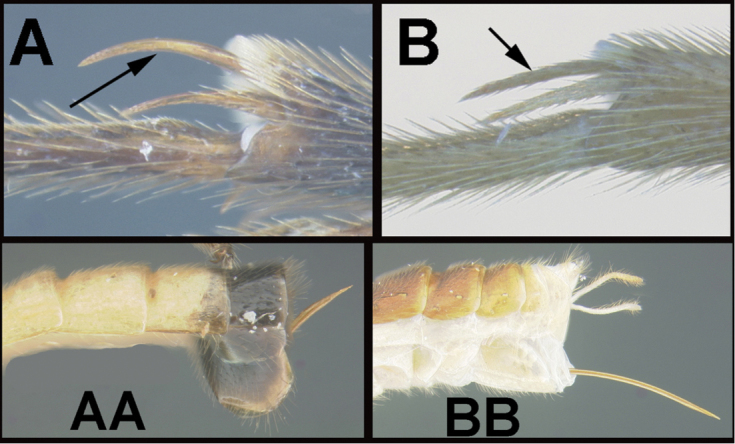
| ||
| 14(13) | A. Tarsal claws simple, swollen basally but lacking a distinct lobe. AA. Hind femur swollen apically | Hermosomastax gen. nov. |
| – | B. Tarsal claws with a squared or slightly acute basal lobe. BB. Hind femur not swollen apically | Bioalfa gen. nov. |
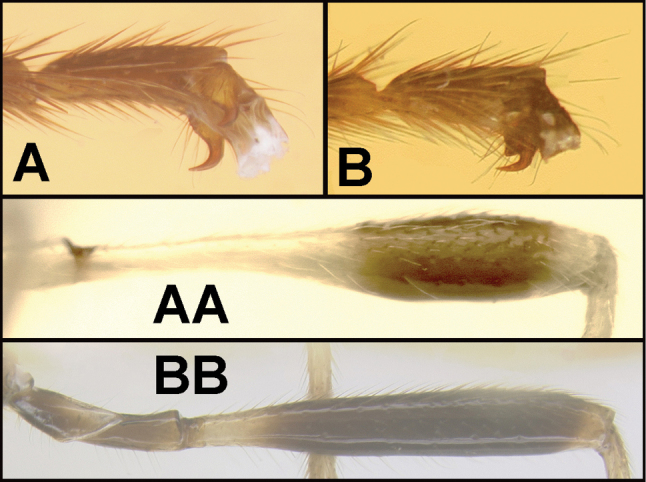
| ||
| 15(13) | A. Tarsal claws lacking basal lobe, but often with basal pectin-like row of short spines | Aleiodes (~10% of species) |
| – | B. Tarsal claws with well-defined sharp tooth or teeth | Triraphis |

| ||

An official website of the United States government
Here's how you know
Official websites use .gov
A
.gov website belongs to an official
government organization in the United States.
Secure .gov websites use HTTPS
A lock (
) or https:// means you've safely
connected to the .gov website. Share sensitive
information only on official, secure websites.